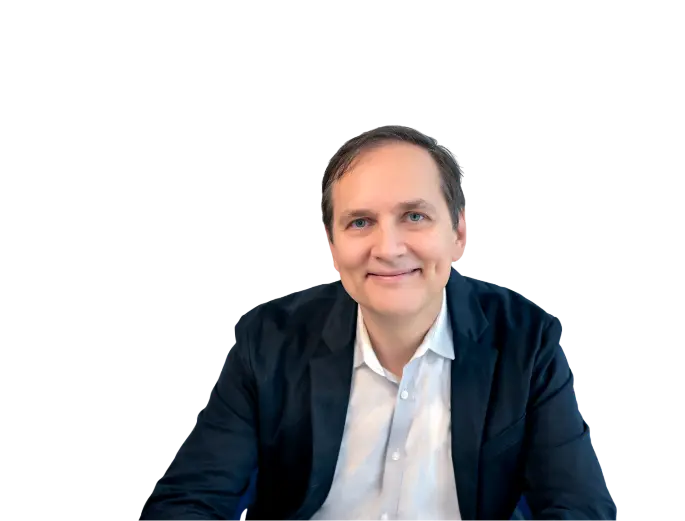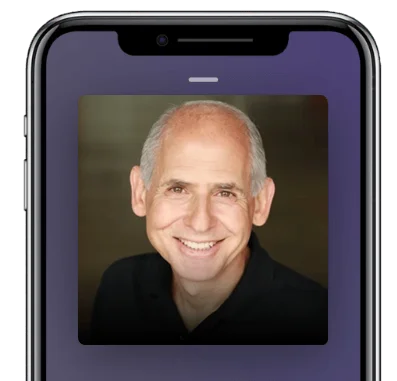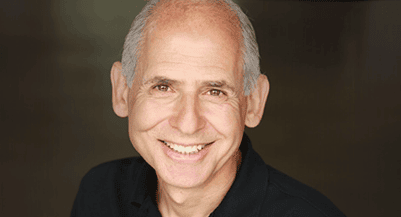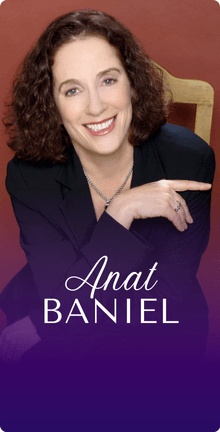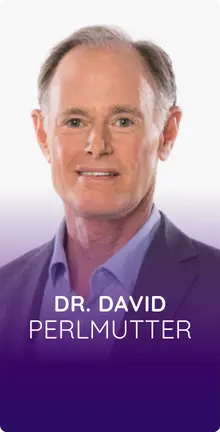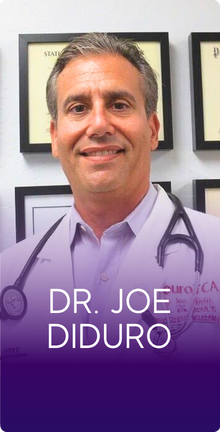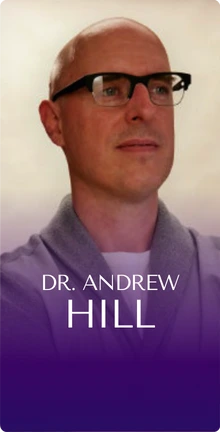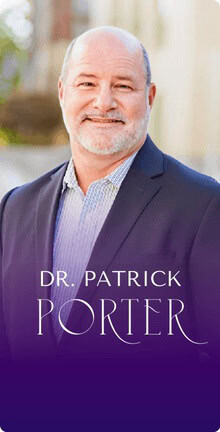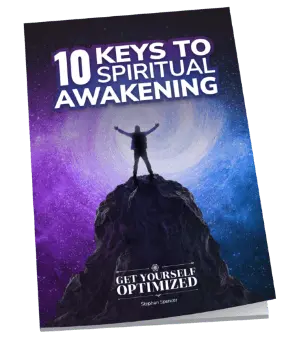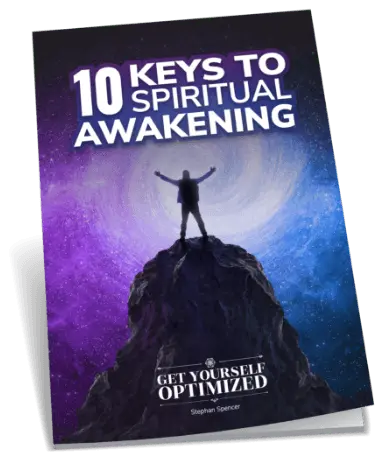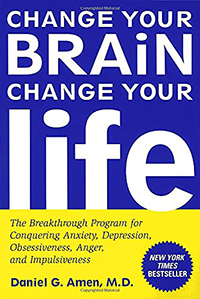
It’s great to have you, Dr. Amen.
Stephan, thanks so much, it’s my pleasure to be with you and to talk to your audience.
Let’s start off with a couple of things that I think were pretty impactful from at least my standpoint. I heard you speak at High Performance Academy, Brendon Burchard’s event, and you said some things that really gave me pause and I actually decided to go ahead and sign up for brain scan at Amen Clinics because of that and also to have some loved ones do the same. One of the things you said, it was in relation to kind of being a dinosaur. You advised us not to be a dinosaur, could you expound on that just a little bit?
Well, goodness. It was about seven or eight years ago, I read a study from the University of Pittsburgh that said, “As your weight goes up, the actual physical size and function of your brain goes down.” I was horrified by that and proceeded to lose about 25 pounds. Then, I looked at our own database of healthy people, healthy weight versus overweight, and the people who are overweight had less function, lower blood flow in the front part of their brain. Then, I was truly horrified and looked at our NFL data, we did the world’s largest study on active and retired NFL players and showed exactly the same thing. I’m like the big body, little brain, you don’t want to become extinct and came up with the dinosaur syndrome and have been very serious about getting people to manage their way with two-thirds of us overweight, one-third of us obese. It’s the biggest brain drain in the history of the United States.
Right, You created a whole plan for changing your diet and optimizing your brain health called The Daniel Plan, could you elaborate a bit on that?
After I came up with the dinosaur syndrome, I actually talked about it on one of my public television specials and I went to my own church and saw how awful they were feeding people. I remember this one day where I saw donuts, hot dogs, bacon, sausage, ice cream and I’m typing on my phone when my wife finds me in church and she gave me that look that only your wife can give you like, “Why the hell are you on that thing in church?” I showed her what I was writing, go to church, get donuts, bacon, sausage, hot dogs, ice cream. They have no idea they are sending people to heaven early. Save them, then kill them. This is not the plan and so I prayed God would use me to change the culture of food at church and no lie, two weeks later, pastor Rick Warren called me from Saddleback Church, one of the largest churches in the world, and he heard me talk about the dinosaur syndrome and he said, “I’m fat, my church is fat, will you help me?” Rick and my friend Mark Hyman created a program that is now literally done in thousands of churches around the world that help people have better brains, better bodies, and better lives.
It’s amazing. While I was having my brain scanned on the qEEG, the lady who was doing the process with me, I asked her, “Have you gotten scanned before?” She told me she didn’t have the qEEG done but she’s done the SPECT scan. Based on that, she made some changes to her diet and she went on The Daniel Plan. She found that it made these sweeping changes to her that were amazing and then when she slowly reintroduced some things back into her diet like dairy, she’s like, “Oh, no. That did not work well with my physiology.” She stayed off of the dairy even though she could’ve gotten back on some of these things after being on The Daniel Plan and that really struck me. Anybody could be on The Daniel Plan, doesn’t have to be—you could be a Buddhist, you can be somebody who’s an atheist, you could be somebody who doesn’t even really get into health and wellness. You’ll just operate better, you’ll feel better, you’ll perform better.
Well, we meant it to be a health program that works in any house of worship or really in any business. We love the prophet Daniel in the old testament who wouldn’t eat the King’s bad food and ended up to be stronger and smarter than his peers that did. What you eat really does matter. The Daniel Plan is actually based on five pillars; faith which is why do you care, purposeful people live longer. Food, food is medicine or it’s poison and I think your relationship to food should be one of mutual love that you don’t want to be in an abusive relationship which means you’re in love with something that hurts you. Faith, food, fitness, that’s truly the fountain of youth. Focus, which is all about brain health and friends. We get sick in community or we get healthy in community. That’s how I choose to spend my time is in a healthy community of people who care about their health and want to do the right thing. I become like the people who I spend time with. I tell that to my teenage daughter, you want to be a drug addict, hang out with drug addicts. If you don’t want to be a drug addict, then you need to be careful with your friends. The same thing is true with their health habits.

Some of these things that we’re seeing in epidemic portions now like Alzheimer’s disease are, in part, based on our diets and lifestyle. Some of the stats you shared were staggering, like 50% of people over was it 85 or something have Alzheimer’s?
Right, crazy. When you think of it, I’m planning on living till I’m 100. Do I really want to put my family through me being a burden on them? I don’t, especially, if there’s something I can do about it.
What can you do about it? How do you specifically kind of make your brain bulletproof from getting Alzheimer’s disease?
I wrote a book ten years ago called Preventing Alzheimer’s and what I wrote then is still true, every bit is true today. The way to prevent Alzheimer’s disease is to prevent all the illnesses that are associated with it. Quite frankly, we know what most of them are. If you are overweight, that increases your risk of Alzheimer’s disease. Not only do you not want to be a dinosaur, you also don’t want to get Alzheimer’s disease. You need to watch both the quality and quantity of calories you consume. Diabetes, hypertension, heart disease, cancer, all of which are related to diet, increase your risk of Alzheimer’s disease as did sleep apnea, snore loudly, stop breathing at night, chronically tired during the day, as well as having low levels of vitamin D, thyroid, growth hormone, testosterone, increase your risk. Notice, everything I’m listing is treatable or preventable. If you have untreated ADD, it increases your risk. If you have untreated depression, increases your risk. If you have low levels of omega 3 fatty acids which are rampant in our society, rampant, increases your risk. I did a study of 50 consecutive patients who are not taking fish oil on their omega 3 fatty acid level. 49 of them are low. It was nuts when you think about it.
Right. I’m vegetarian but I’ve been taking fish oil so I guess technically I’m not a vegetarian. I did re-introduce fish into my diet relatively recently but I never stopped taking fish oil even when I was “vegan” for a while. I knew that it would be really bad for my brain so that was the one I guess out that I made for myself, I’m not going to be completely vegetarian. I am going to take fish oil and continue to do so. I’m very protective of my brain and that’s one of the reasons why I went and got scanned by your clinic was I wanted to see what was going on. Peter Drucker would say, what gets measured, gets managed.
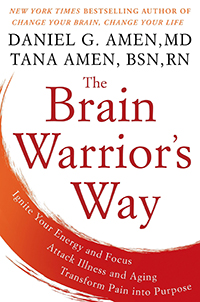
This really struck me too, you said something about like psychiatrists are the only type of medical doctor that doesn’t look at the organ they’re treating. I wanted to see what was happening in this organ that I care very much about and want to protect and have it work well into my 80s, 90s, 100. Maybe you could walk through some of the process here when somebody comes into your clinic such as myself, there’s a EEG that you guys do, there’s a web narrow test, there’s the SPECT scan which is the main thing where you get the resting and concentration brain scans. Could you just run us through what that’s like to various tests that the regimen that you put new patients through?
We have developed our evaluation over the last 27 years and it’s very comprehensive. Sometimes people whine or complain a little bit about how much information we gather but I think at the end of the day, most people feel appreciative that we care to really do a thorough assessment. It starts with a very detailed history where we get information about your life, what you’re concerned about, what you’ve tried to fix. We call it a four circle approach, we get biological, psychological, social, even spiritual information on our patients. Then, we test their brain. We do a very sophisticated, computerized, neuro-psych assessment that tests 17 areas of cognitive and emotional functioning. Then, we scan people because how the heck do I know what’s going on in your brain unless I actually look at it.
If I don’t look, I don’t know, I’m a psychiatrist but my specialty is literally the only medical specialty that never looks at the organ they treat. Because of that, they hurt people, they miss toxic exposure, they miss head trauma, they miss if your brain is working too hard or not hard enough and that’s why my field has a bad reputation, “Oh, you’re a psychiatrist. You’re sort of not a real doctor.” In 1981, I told my dad I was going to be a psychiatrist. He asked me, he said, “Why don’t you want to be a real doctor?” That notion is out in the world and in many ways, we don’t act like real doctors and so the scans have completely changed the way I treat my patients, think about myself and we use them in education programs literally around the world.
When we scanned you, we don’t make a diagnosis without clinical information that’s why we got a lot of clinical information. The scans really helped a lot. Along with, we did another study called Quantitative EEG that looks at the electrical activity in your brain. SPECT looks at blood flow, Quantitative EEG looks at the electrical activity, and then it really gives us a very complete picture on who you are and what kinds of things we could do or recommend to help you be your best. Ultimately at the end of the day, that’s our goal. We want to help you be the very best that you can be.
Right, but sometimes people don’t know that they are clinically depressed, or [00:17:13], or have ADD. This isn’t just like let’s quiz the patient and see what they describe as their symptoms, no let’s actually look at their brain and see how it’s functioning. What about the blood flow gives you insight into the functioning of the brain? Why the blood flow, why not like an MRI scan?
MRI is an anatomy study. They show what the brain actually physically looks like. It’s just not where it’s at in psychiatry. It’s function, it’s not structure. The structure is almost always normal, the function is almost always abnormal in suffering people so it’s a more sensitive study. There are five or six functional studies, PAT, SPECT, which is what we do quantitative EEG, something called functional MRI. We just like SPECT, we think it’s the most stable, the most reproducible and now we have a database of over 120,000 scans. When I look at your brain, I’ll have a pretty a good idea of what’s going on with it and what to do for it in the context of what you’re concerned about.
I recently saw the movie Concussion which is a fantastic movie and you were an advisor to that movie, correct?
I was. I’m in the credits, how fun for me. I was actually written into the first version of the script and I ended up on the cutting room floor, on the editing floor because what Peter Landesman, who was the writer and director, what he said is I’m the only one that actually offers people hope.
Wow, that was a great movie. A lot of people don’t realize the dangers involved in playing football even just a high school student, you’re really subjecting your brain to a lot of trauma and that might not show up in a structural kind of scan like an MRI but it can show up in a SPECT scan with the patchy blood flow. Could you describe a little bit about what the dangers are of contact sports like football in particular and how that manifests itself in behavior and in the scans?
Your brain is involved in everything you do. How you think, feel, act, interact, is indirectly related to how your brain works. Your brain is the organ of loving, learning, behaving, character in every decision you make. When it works right, you work right, when it doesn’t you have trouble. It’s complicated and soft, about the consistency of soft butter, tofu, custard, somewhere between egg whites and jello. It really contains who you are, your soul, your essence, your very being. When it works right, you work right and it’s soft and it’s housed in a really hard skull that has multiple sharp bony ridges. If you damage it, you damage someone’s life. If you think about it from that perspective, why would you ever let a child play football? Why would you ever let a child hit a soccer ball with their head, do a dangerous gymnastic routine if you love them, and if you’re literally there to protect them?
I always say we should be our children’s frontal lobes until theirs develop, which is about 25. I played football in high school and even in medical school I had never really given a thought, I was a huge Washington Redskin fan and I just didn’t give it a thought until I started looking at people’s brains in 1991. All of a sudden, I’d see these devastated brains and devastated people. I just saw somebody today, a 23-year old who is having very serious psychiatric symptoms and he played football for six years, all the way up into college. You can see the damage in his brain that very likely came from the thousands of hits that went to his head.
Your brain is involved in everything you do. How you think, feel, act, interact, is indirectly related to how your brain works.
What do you do about that? Besides keeping your kids out of these contact sports, let’s say it’s too late, you’re in adulthood now and you’ve already gotten pummeled plenty of times. I guess the first step is to get scanned to see the degree of the damage and to make some dietary changes, add some supplements, do whatever other things that are going to help heal those injuries.
Well, Stephan, what I get really excited about, there’s a reason my best selling book is called Change Your Brain, Change Your Life, is because there is hope if you do the right thing. In 2007, when I met Anthony Davis, he’s the hall of fame running back from USC. His brain was very damaged and a year later, it was much better. Together, he and I approached the NFL players’ association and they helped sponsor my first study on active and retired NFL players because I thought the NFL wasn’t telling the truth about traumatic brain injury in football. In fact, I was sure they weren’t telling the truth. We did 100 players and showed high levels of damage. But you know my goal is never to see someone’s troubled brain and go, “Oh, I’m really sorry. See you later.” My goal is, “Can we do something about it?” People with high levels of brain damage, high levels of emotional and cognitive dysfunction on a brain smart program on our rehabilitation program showed high levels of improvement.
80% of our players showed improvement especially in blood flow to their brain, memory, sleep, motivation, and mood. I mean, how cool is that? It’s not just for head trauma, it might be for early dementia, it might be for people who have resistant depression. Two million people every year have a new traumatic brain injury. I visited the VA last week and we’re going to do a demonstration project at one of the VAs in Pennsylvania showing that within imaging you can better target treatment but then it’s using natural ways to heal the brain. Diet, exercise, targeted supplements, sometimes hyperbaric oxygen or feedback. We have lots of tools in the toolbox. But without a map, without an image, you’re just throwing darts in the dark at people and when you do that, you hurt people.
We have lots of tools in the toolbox. But without a map, without an image, you’re just throwing darts in the dark at people and when you do that, you hurt people. Share on XYou said, I remember this really profound comment, you said a map is worth a thousand pictures. What do you mean by that?
Well everybody’s heard of pictures worth a thousand words but map is worth a thousand pictures, a map tells you where you are and gives you directions on how to get to where you want to go.
How would that apply to a brain scan? That’s your map. Let’s say that somebody didn’t get traumatic brain injury from football or whatever that they just have some functional problems, maybe they have ADD or they just can’t seem to concentrate or just whatever it shows up functionally in their lives, it’s holding them back from optimum performance. You’ve got this map now, you’ve got the SPECT scans, how do you turn that into actions? Different things are lit up differently. You may have a lot of blood flow going to the cerebellum for example, it’s pretty normal, or you might have a lot going to your basal ganglia or to your temporal lobes. Kind of walk us through what some of the interpretations of the scans might lead you to take in terms of changes to your diet, to behaviors, maybe incorporating I don’t know brain games or something into your daily regimen, maybe going into a certain type of therapy like AMDR, connect the dots for us.
Well so, of course, it depends on the history on what we see. Do you know Dave Asprey?
Yes, I’ve had him on my show.
I love Dave. Dave and I are friends. I did his show last year and it’s public knowledge, he came to CS because he was just cognitively not doing what he wanted to be doing. His brain showed lots of bumps and holes which meant overall low blood flow to his brain. It had a toxic appearance but he wasn’t using drugs or drinking alcohol, it turned out he had a severe mold in his house. The treatment was getting rid of the mold and he ended up producing a movie called Moldy.
That’s a great movie.
That’s a really clear example. Toxic exposure, toxic looking scan, you have to go hunt down why, he was being honest about drugs and alcohol, he was being poisoned at home. You got to get rid of the poison, that’s the first thing to do. Say you have a diamond pattern, your emotional brain is working too hard, often goes along with emotional trauma issues.
What’s a diamond pattern? Maybe we can elaborate just a little bit. That means that in the front part of your brain, the ACG is lit up, it’s over-reactive.
Right, so it’s called the Anterior Cingulate Gyrus which I think is the brain’s gear shifter, it works too hard, the basal ganglia worked too hard, that they can be involved in anxiety and the thalamus part of the limbic brain works too hard. It looks like a diamond. Our experience, and we’ve published studies that show when we see increased activity that looks like a diamond in the emotional part of the brain, often do the past emotional trauma and a treatment called EMDR, Eye Movement Desensitization and Reprocessing, can help calm that down. When you try to concentrate, get lower activity in the front part of your brain, one of the things we see with that is that it is often associated with ADD especially if there are decreases as well in the cerebellum. That means the harder you try, the worse it gets and so then we’ll use natural treatments for ADD or we’ll use medicine. I never tell my patients what to do, I always give them options and they get to choose what they do.
If you have untreated ADD as you said earlier, it could lead to Alzheimer’s because it’s just this ticking time bomb, just like untreated depression. Having these scans and the clinical history, and being able to connect the dots and figure out what’s happening, allows you to save them from just a horrible fate, potentially.
Right. It’s like, “Well, why would we argue about more information to help patients?” It’s been the blessing of my life and also the curse because it’s not standard, I am disrupting an industry and I’ve come to realize, people don’t like that.
I am disrupting an industry and I’ve come to realize, people don’t like that.
The trailblazer tends to get all the arrows in their back.
But I mean to me, it doesn’t matter because what we’re doing is right. If you don’t look, you don’t know, and we should stop lying thinking we do know. If you don’t look, you don’t know and that leads to harm, it leads to hurting people.
Let’s say that you’ve got this diamond pattern. I’ve had my brain scanned and I can look at my scan and I’ll say, “Okay, these are some of the things that I’ve got going on like a diamond pattern or whatever and here’s some things I can do to calm that down because if you’re kind of revving at too high of a speed kind of like the motor the burns out, you’ll end up with an overactive brain, ADD and maybe Alzheimer’s in the future and so forth. Let’s say that you don’t believe in taking meds like the standard sort of toolkit that a psychiatrist would have, the different serotonin inhibitors and that sort of stuff, let’s say that you’re really anti-meds, do you have other options and are those options just as effective or only moderately effective?
It depends what it’s for. If I have someone who has severe bipolar disorder, yes I’m going to put them on fish oil and lifestyle interventions and I’m probably going to use lithium because I’m not crazy that for severe psychiatric disorders, that medications are often required. But for things like mild to moderate depression, panic disorders, ADHD, OCD, PTSD, a whole bunch of natural treatments that are literally with study that are effective. It depends on the level of severity and quite frankly a patient’s willingness to do the things we ask.
Let’s say that the patient goes on supplements and that’s it, is that enough for somebody who has let’s say a diamond pattern or diamond plus or something kinda similar to that or do they need to make more significant shifts, do they need to be doing EMDR, neurofeedback, whatever else in order for this to really heal the brain?
It depends on their response and their level of pain. My friend, Pastor Warren, says people don’t change when they see the light, they change when they feel the heat.
I like that.
On the supplements, you really feel a lot better. I have somebody who’s dad and grandfather died of Alzheimer’s disease and their memory was slipping and they didn’t want to get it. High level of motivation, all he did basically was the supplements and lifestyle interventions. A year later, his brain is remarkably better. I don’t think he needs to go onto a hyperbaric chamber and do some of the more exotic things that we recommended for him. It’s like start with the simple stuff, do it, see how you feel and don’t ignore it, have good follow-up. That’s one of the most important things.
People don’t change when they see the light, they change when they feel the heat.
Now, Brendon Burchard had shared from stage at High Performance Academy what an impact that you had had on his life. You turned his life around from the scanning and from the recommendations that you gave him based on what you found. I guess that’s public information too since he shares that from stage. Do you want to talk a little bit about that like somewhat with Dave Asprey?
Well, Brendon and I are buddies. I love him and followed his work and then he got into a pretty bad accident. If you know Brendon’s story, his signature story is about a car accident. The first time I heard it, I’m like, “This boy needs to be scanned. He’s had a bad brain injury.” Then again he got another one in Mexico on a Moped and he was in a middle of a book deal, he just couldn’t think to get his book done. I scanned him and showed the damage. We worked to rehabilitate it and he did much better, sometimes he’ll have me speak at his events which I’m always grateful for.
He said that he’s basically non-functional, he was not able to concentrate, he wasn’t able to finish his book, he wasn’t able to really perform even at a fraction of the level that he used to. This can be life or death. If you don’t look at what’s going on with your brain, it could really lead you down a bad path. What about for PTSD, like somebody who gets panic attacks from PTSD, somebody who maybe just can’t sleep at night, what would you recommend for somebody like that?
Well, sometimes it really is PTSD and sometimes it’s traumatic brain injury. The symptoms often overlap and it’s hard to tell the difference. I’d recommend we scan them and then target treatment based on what we see. I really like EMDR. It’s a psychological treatment for trauma. I recommended it to a lot of people.
What is the difference though between PTSD and TBI, traumatic brain injury. TBI, you can actually see in the scan that there’s been some damage let’s say from football or somebody who gets beat up or whatever, PTSD is just from experiencing traumatic events that kind of rewires your brain, could you explain this better?
Yeah. When you have brain injury, circuits get damaged and you generally see low activity in the brain. When you witness an emotional trauma, your buddy’s arm blown off or being raped or robbed or had a fire, your emotional circuits became hyperactive and they can’t settle down, and you can’t settle yourself down.
Got it. This is something that shows up on a scan, how does that show up?
Well, we see the diamond pattern of hyper-activation with PTSD and then decreases with traumatic brain injury, depending on where the injury occurred.
What is diamond plus? What’s the difference between diamond and diamond plus?
Plus means we also see increased activity in the right lateral temporal lobe. It’s one of the areas where we think trauma are housed, where we remember things.
You’ll end up getting stuck in this loop. The diamond pattern has this kind of loop nature to it where you just kind of replay stuff, traumas feel like they are happening again even though they might be from 20 years ago and they feel very real like they’re happening at the moment. You have a real risk of dying from this event which isn’t occurring, it’s from deep in the past. How does that manifest in daily life if you have the diamond pattern and you’re not under a great deal of stress, you’re just kind of operating normally, you go to work, you take your kids out to do activities and stuff and you just live a pretty normal life. How does that manifest for somebody that creates a difficulty in them living a normal life?
We treat people, we don’t treat scans.
Well, they have the pattern but they don’t have symptoms. We treat people, we don’t treat scans. Then, you just note it. What I often find is I see the pattern and that there’s a fair amount of trauma in someone’s past that they have sort of worked around, whether it’s a difficult childhood or unresolved grief. Again, we don’t treat scans, we treat people. When I see the diamond pattern, I always ask about it. I get the most amazing responses of forgotten trauma, like forgotten head trauma. It leads to some very important discussions because the diamond can impact relationships with kids or spouses and people don’t know why they feel angst, they just know they feel angst.
Right. If somebody doesn’t remember the trauma, the event, you can still work to address it so they have a sense of anxiety or something unresolved, they don’t know what it was, maybe it was when they were really small and you can still address it with something like EMDR, you don’t have to bring the trauma event if they don’t remember it, you can address with EMDR. How does that work?
Well, they’ll bring up some mild anxieties, get them to do the bilateral hemisphere stimulation that happens in the EMDR, and often they’ll begin to remember other things that happened that they significantly forgot.
It will trigger these repressed memories and allow them to kind of clear it.
Correct.
Got it, okay. One statement that you said that really struck me was in relation to scans and having a lot of lit-up areas is you said I’d rather run hot than cold. Could you elaborate on that?
Sure. That I’d rather have my brain work too hard that I can calm it down rather than not hard enough that may be from damaged circuits.
Right. You can calm down a brain easier than you can get it revved up, there are a lot of patches that aren’t getting enough blood flow, that’s harder to address than an over-reactive brain.
Correct.
What are some of the dangers of an over-reactive brain? Alzheimer’s expose will be one of the big ones, right?
No. Alzheimer’s is more from an un-direct brain. We see decreases especially in the back half of the brain.
So the back half of the brain, especially like the cerebellum, is usually pretty hot, right? It shows up as a lot of white or at least red on the scans as far as activity. If that’s too low then there’s—what are some of the dangers there?
The cerebellum is such an important processing area. When it’s low, people are not going to think as quickly or as fast. Alzheimer’s is really when it’s more the parietal lobes and the temporal lobes. That pattern has actually been described for 27 years. It’s been described for a long time.
The cerebellum is such an important processing area. When it’s low, people are not going to think as quickly or as fast.
Back to the dangers of an over-reactive brain. Not Alzheimer’s but what would be some of the other diseases and behaviors that would show up if an active brain is left untreated?
Mostly anxiety, depression.
If we had to boil this down to one recommendation, like all the stuff we talked about, would it be for people to get scanned, would it be for them to read one of your books, to take one of your online courses, what would be the action that they should take?
Well, that’s why we have so many different portals depending on where people are. I have a great TEDx talk called The Most Important Lesson from 83,000 Scans I did a couple of years ago and it really sort of gives people the rationale why. I think if they’re really struggling and want to be better, a scan is a great place to start and evaluation. I think if they just want more information, to read Change Your Brain, Change Your Life, or my wife and I have two new books coming out in November called the Brain Warrior’s Way and The Brain Warrior’s Way Cookbook. We’re really excited about helping people get serious about their health, that’s why it’s purposefully called The Brain Warrior’s Way because it’s a serious book for serious people. I’m very excited about that, we’re actually doing an online course called Brain Warrior’s Way. We have 20,000 members in the course.
That’s great. It’s going on currently live now every Wednesday, right?
Correct.
That finishes up pretty soon. I’m guessing in a couple of months or something?
Yeah, at the end of October.
They can watch recorded past classes and make some changes to their life based on that.
Yeah, I think they’ll like it. I mean if they want to be on this journey of really having a better brain and a better life. Brain Warrior’s Way is sort of the path.
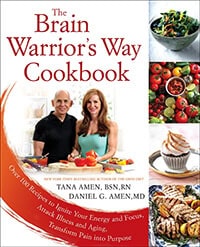
Would you recommend brain games like Lumosity or is that kind of a waste of time?
I think if you do it in the context of a brain healthy life, it probably gives you a little bit of a benefit. I think to do it by itself and eat like crap and drink and smoke pot, it’s not going to help you at all.
Right, and some people think that pot smoking isn’t going to harm your brain. I just think that’s crazy.
It is crazy. We’re getting ready to publish a study on nearly a thousand pot smokers and the answers are just not good.
Like how not good?
Well, every area of their brain was lower in activity. We just talked about, “Would you rather have low activity or high activity?”
You’ve given a stat at your presentation at High Performance Academy, I forget what it was, specific about pot smoking which I’ve actually never done, I’ve never taken any drugs. Nice and clean, but there are a lot of people out there who have done pot and other substances. Do you remember the stats? I’m not remembering the exact statistic from pot smoking.
Well, people who are addicted to their gadgets lose 10 IQ points over a year. People who smoke pot lose nine.
Wow, and if you do both, that’s even worse.
If you do both, it’s even worse.
Last question here, neurofeedback. The idea that you could be hooked up to qEEG and then play some brain games that allow you to change the electrical activity based on you seeing if this is working or not, I’m oversimplifying but could you give us your thoughts on neurofeedback?
You know I’m a huge fan. I mean you go to the gym and work your body out and over time you see how your body gets better. I think of neurofeedback the same way, it’s a way to workout your brain to help balance these specific abnormalities to be better.
Would you say that everyone could be a good candidate or is it just a certain type of person who would be a good candidate for neurofeedback?
You know, that’s why we do the imaging and why we did the qEEG with you because it’s like you have a pattern that is more likely to be helped by it. If you do, then it’s clearly one of the things to consider.

Well, I for one, am a huge proponent of what you are doing and I’m going to be sharing on Get Yourself Optimized website, not only the show notes from this episode or the audio and everything but also videos that I took of me getting scanned, the SPECT scan, and me getting the qEEG done and what the readout showed and everything. Listeners, be sure to check out Get Yourself Optimized website for all of that. I think you’ll enjoy getting an inside view of what it’s like be at Amen Clinics and getting scanned and analyzed. Any last thought that you want to share with our listeners? Any one last piece of advice that you haven’t already shared?
I think the best thing that people can do is fall in love with their brains and then work hard to take care of them. If you do that, it can literally change the trajectory of the rest of your life.
Well said. Alright, everyone check out amenclinics.com and any other websites that you’d recommend folks go to?
We also have supplements at brainmdhealth.com so they could check out that along with our information products.
So Brain Warrior’s Way is at brainwarrioswaylive.com. Daniel, this was such a joy and honor to interview you for Get Yourself Optimized. Thank you again for being here.
Thank you so much, Stephan.
Alright, thank you listeners and we’ll catch you on the next episode, this is Stephan Spencer signing off.
Important Links
Connect with Dr. Daniel Amen
Books
